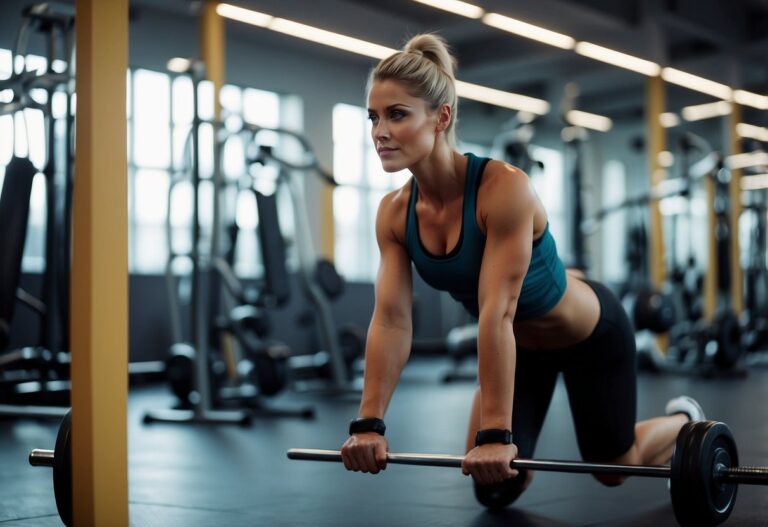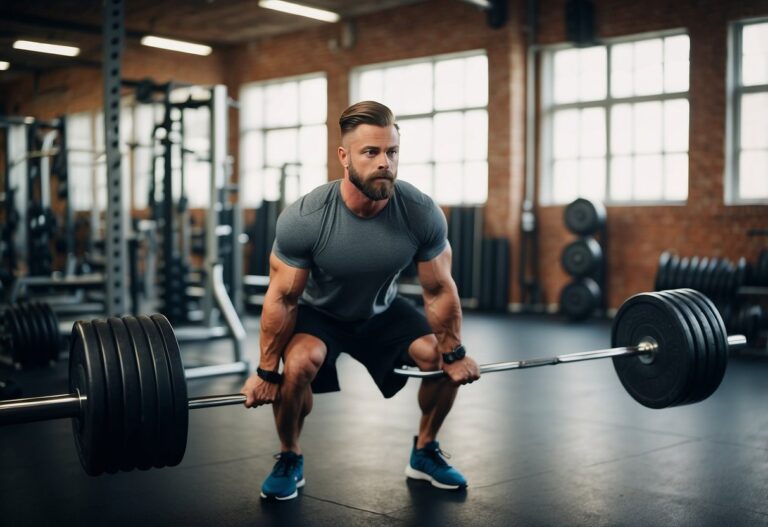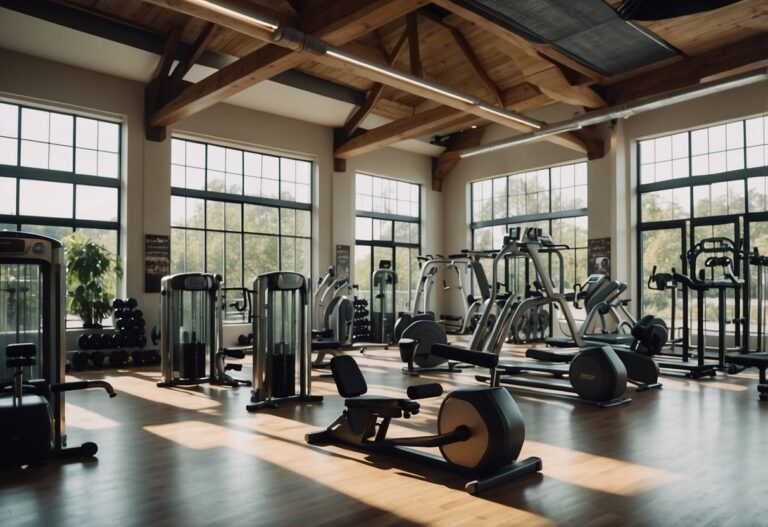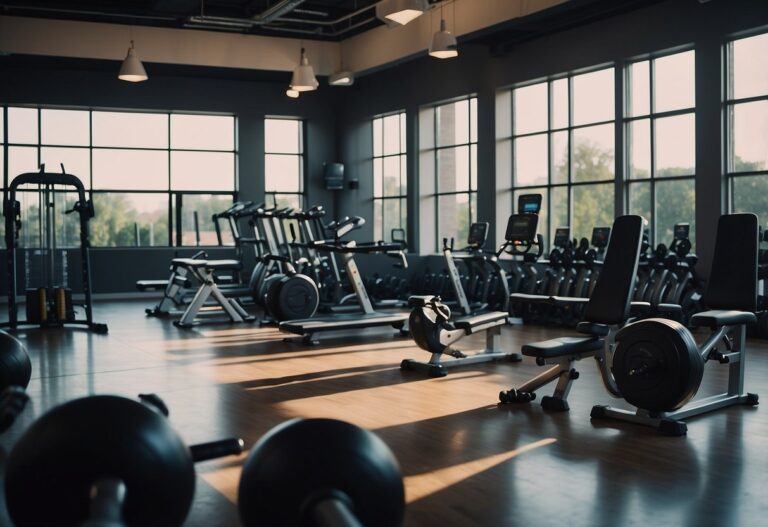Calisthenics, a form of exercise that uses your body weight for resistance, is perfect for those who prefer not to rely on gym equipment. It’s accessible, effective, and can be done anywhere, making it a great option for maintaining fitness. What makes calisthenics so valuable is its ability to build strength, flexibility, and endurance without the need for extensive equipment.
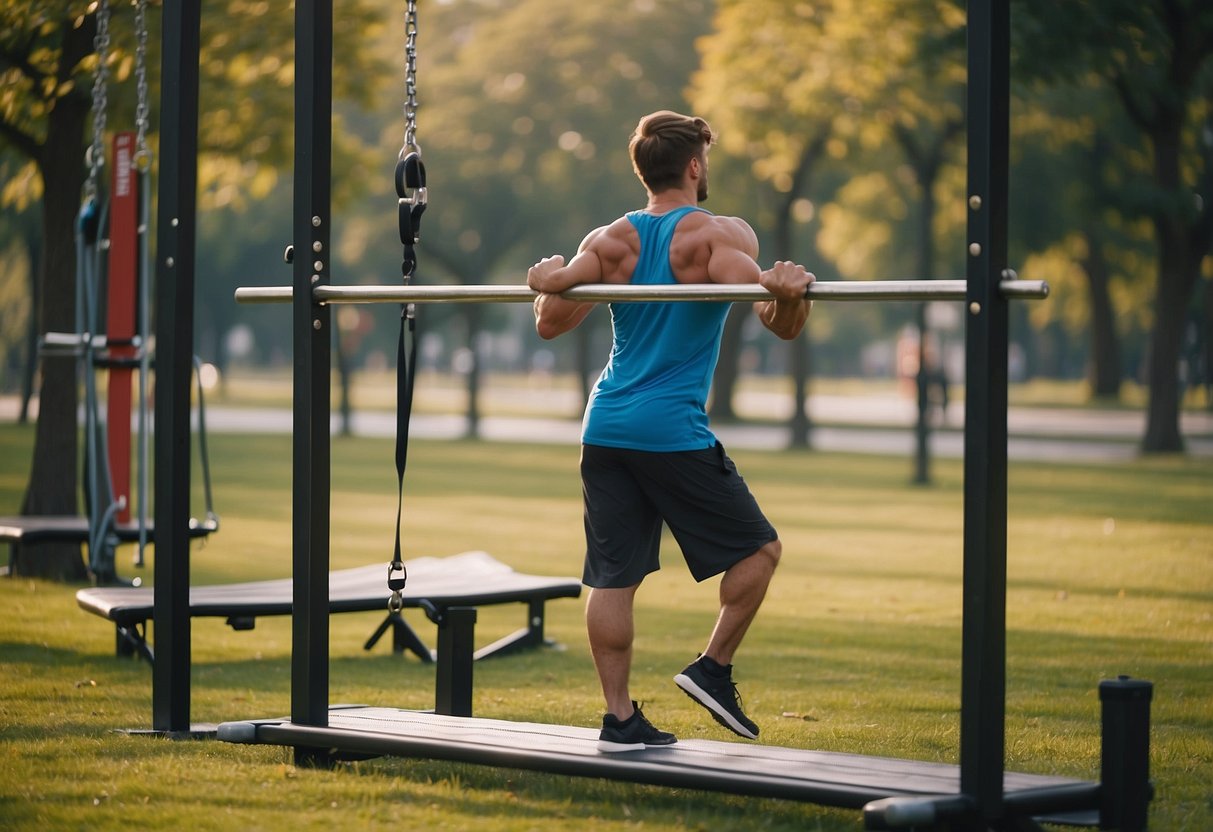
Understanding the basics of calisthenics and incorporating some practical tips into your workout can enhance your exercise routine significantly. You’ll find that with a little guidance, this form of training can be both fun and rewarding, helping you achieve your fitness goals efficiently and conveniently.
Perfecting the Push-Up
Start by finding the right position. Your hands should be shoulder-width apart. Keep your body in a straight line from head to heels. This ensures you use the correct muscles and avoid injury.
If you’re just starting, try knee push-ups. These are easier and help you build strength. Aim for three sets of eight to ten reps.
For more advanced variations, try diamond push-ups. Place your hands close together under your chest. This targets your triceps more.
Remember, the key to improvement is consistency. Practise regularly and you’ll see progress. Don’t forget to rest between workouts to give your muscles time to recover and grow.
Mastering the Muscle-Up
To master the muscle-up, start with a high pull-up until your belly button is level with the bar. This gives you the momentum needed to transition to the next step.
Rotate your wrists so your fingers are on the bottom side of the bar, then lean forward with your chest.
You are now in a dip position. Press yourself up as high as you can to complete the muscle-up.
Before attempting muscle-ups, ensure you can perform an explosive pull-up and a straight bar dip. This strength foundation is crucial.
For a smooth start, jump into the bar while standing behind it and swing forward.
Pistol Squats for Leg Strength
Pistol squats are a fantastic exercise for building leg strength. This move involves squatting on one leg while the other leg extends straight out in front of you. It looks like a pistol, hence the name.
These squats are not just about strength; they require balance and stability. You need strong quadriceps, glutes, and hamstrings to perform them well.
Try starting with support, like holding onto a pole or the edge of a table. As you improve, gradually reduce your reliance on the support until you can perform the squat unaided. Practising regularly can lead to significant improvements in your lower body strength and functional fitness.
For a comprehensive guide on progressing with pistol squats, check out this tutorial.
Handstand Progressions
Handstands might seem tough, but breaking them down into steps can help. First, build strength. You should be able to do 20 push-ups and 20 bodyweight squats. This helps create a solid base.
Next, practise your balance with a wall for support. Place your hands on the ground and walk your feet up the wall. This helps you get comfortable being upside down.
When you’re ready, try kicking up into a handstand without the wall. Focus on keeping your body tight and controlled. With time and practice, you’ll find yourself getting better and holding it longer. Remember, consistency is key!
Effective Plank Variations
Single Leg Plank: Raise one leg off the ground while you hold a standard plank. This adds an extra challenge, making your core work harder to maintain balance.
Leg Raise Plank: Lift one leg high while keeping your back straight. Switch legs after a few seconds. This variation targets your glutes and lower back effectively.
Fingertip Plank: Hold your body up using your fingertips instead of your palms. This increases grip strength and core stability. Give it a go if you want a fresh challenge.
Plank with Shoulder Touch: Lift one hand off the ground and touch your opposite shoulder. Alternate sides to keep your balance while engaging your core muscles even more.
Hand Plank: Instead of resting on your forearms, hold yourself up on your hands. This changes the angle of your body, putting more emphasis on your shoulders and triceps.
For a clear step-by-step guide on each variation, you can refer to this helpful resource on Modern Calisthenics.
Pull-Up Techniques and Tips
When starting with pull-ups, maintaining proper form is key. Begin each rep with your arms fully extended and end with your chin above the bar. This ensures your muscles get the full range of motion.
Grip strength is crucial for pull-ups. Many beginners struggle because their forearm muscles are weak. You can improve this by practising hanging from the bar or using grip strengtheners.
Warm up before your workout to prevent injuries. A good warm-up increases blood flow and reduces the risk of muscle strains. It also improves your muscle function and flexibility.
Remember to include rest days in your routine. For example, a good plan might be to perform pull-ups on Monday, Wednesday, and Friday, and rest on the other days. This allows your muscles to recover and grow.
Using different pull-up variations can also help improve your strength. Consider trying variations like chin-ups, wide-grip pull-ups, or using gymnastics rings to target different muscles.
Practising regularly with correct techniques ensures a sustainable and injury-free journey. Following these tips will help you achieve your first pull-up and beyond.
Dips for Upper Body Strength
Doing dips is a fantastic way to build upper body strength. They primarily target your chest, triceps, and shoulders.
To start, use parallel bars. Hold yourself up with straight arms, leaning slightly forward.
Lower your body until your elbows are at a 90-degree angle. Push back up to the starting position.
Try to do 4-5 sets of 10-20 reps for the best results. For some variety, I recommend checking out these advanced dip variations.
Always remember to warm up well to avoid injuries. You can even add weights for more challenge and better gains. Keep pushing yourself!
Hollow Body Hold
The Hollow Body Hold is a key exercise in calisthenics. It’s great for building a strong core. Begin by lying on your back with legs extended and arms by your sides.
First, press your lower back into the ground. You should feel no space between your back and the floor. This ensures your core is properly engaged.
Next, raise your legs about 2-3 inches off the ground. Lift your shoulders a bit too. Keep your arms extended, parallel to your legs. Hold this position as long as you can.
It might be tough at first, but it gets easier with practice. You can try different variations, like Jackknives or Lying Leg Raises, to keep it interesting.
You’ll notice this exercise improves your overall stability. If you’re into other sports or activities, a strong core helps with balance and control. Try incorporating the Hollow Body Hold into your routine.
Advanced L-Sit Mastery
You’ve nailed the basics of the L-sit, now let’s take it up a notch. Start by holding your L-sit for longer periods. Can you manage 20 seconds yet? Aim for it.
Work on improving your form. Point your toes and keep your legs straight. This will engage your core even more.
Try lifting one leg at a time to build strength gradually. It’s a great way to progress if you find holding both legs difficult.
Use different surfaces like parallel bars or rings. This adds a new challenge and works out different muscle groups.
Improving Grip Strength
Working on grip strength is crucial for calisthenics. Pull-ups are an excellent exercise for this. You can vary your grip width to target different muscles, giving you a stronger hold. Hanging from a bar is also effective. Just hang for 30 seconds to a minute to build endurance.
Using a “fat grip” can help too. By making the pull-up bar thicker with a towel or t-shirt, you activate more forearm muscles. This makes your grip stronger over time. Even simple things like squeezing a stress ball can make a difference.
Fundamentals of Calisthenics Workouts
Calisthenics workouts focus on using your own body weight to build strength, flexibility, and endurance. Knowing what exercises to do, their benefits, and avoiding common mistakes can help you maximise your results.
Understanding Bodyweight Exercises
Bodyweight exercises are movements where you use your own weight as resistance. Basic exercises include push-ups, squats, pull-ups, and planks. These exercises can be performed anywhere, making them very convenient. You don’t need expensive equipment or a gym membership.
Push-ups, for instance, target your chest, shoulders, and triceps. Squats work on your legs and glutes. Pull-ups strengthen your back and biceps, while planks engage your core. By combining these exercises, you can achieve a full-body workout. Start with simpler variations and gradually increase the difficulty level as you become stronger.
Benefits of Calisthenics
Calisthenics offers many advantages. First, it improves functional strength, meaning you get stronger in ways that help you in daily activities. It also promotes mobility and flexibility, critical for avoiding injuries.
Another benefit is accessibility. Whether you’re at home or travelling, you can always fit in a quick workout. It’s also cost-effective since you don’t need any special equipment. This form of exercise can also improve mental health by reducing stress and boosting mood.
Furthermore, calisthenics can be easily modified to match your fitness level. You can start with basic moves and progress to more advanced variations as you get fitter.
Common Mistakes and How to Avoid Them
One common mistake is using poor form, which can lead to injuries. It’s essential to perform each exercise with the correct technique. For instance, when doing push-ups, ensure your body forms a straight line from head to heels.
Another mistake is overtraining. While enthusiasm is great, your muscles need time to recover. Ensure you incorporate rest days into your routine. Ignoring rest can lead to burnout and injuries.
People often neglect warming up and cooling down. Proper warm-ups prepare your muscles for exercise, while cool-downs help in recovery. Spend at least 5-10 minutes warming up and cooling down.
Remember, focusing on progress rather than perfection will help you stay motivated and injury-free.
Advanced Calisthenics Techniques
In advanced calisthenics, focusing on progressive overload, mastering complex movements, and integrating other training methods can elevate your workout. These strategies help build strength and improve performance.
Progressive Overload in Calisthenics
Progressive overload is key to making gains in calisthenics. This involves gradually increasing the difficulty of your exercises. Start by adding more reps or sets to your routine.
You can also alter the leverage of your body to make moves harder. For example, progressing from regular push-ups to one-arm push-ups. Consider diamond push-ups for an extra challenge. Incorporating weights or resistance bands can further boost difficulty.
Mastering Complex Movements
Complex movements like the muscle-up or front lever require skill and strength. Start by breaking these exercises into parts. For muscle-ups, practice dips and pull-ups separately before trying the whole movement.
Control and technique are critical. For instance, strict ring muscle-ups demand precision. Use slow descents and static holds to build control. Also, work on your grip strength and core stability, as both are essential for mastering these advanced exercises.
Combining Calisthenics with Other Training Modalities
Integrating other training types can complement your calisthenics practice. Adding weight training or flexibility exercises can provide a balanced approach.
Strength training with weights can be beneficial. It can enhance your ability to perform bodyweight exercises more effectively. Another option is to use resistance bands to provide varied resistance.
Yoga and stretching routines can improve your flexibility and joint health, aiding in calisthenics movements. Combining these modalities can help you achieve a well-rounded fitness level. For ideas, check out resources like this guide for a structured approach to combining different training methods.
Calisthenics Recovery and Nutrition
Proper recovery and nutrition are critical for anyone engaging in calisthenics. They help improve performance, speed up recovery, and prevent injuries. Below are some essential aspects to consider.
Post-Workout Stretching and Mobility
After an intense calisthenics workout, stretching is crucial to maintain flexibility and prevent stiffness. Focus on static stretches that target the muscles you used, such as hamstring stretches after squats and lunges or shoulder stretches after push-ups.
Incorporating mobility exercises can also be beneficial. Simple exercises like arm circles and leg swings keep your joints limber and promote a full range of motion. Don’t rush this part; spend around 10-15 minutes on stretching and mobility exercises to reap the benefits. Consistently stretching post-workout helps in faster recovery and reduces soreness.
Proper Nutrition for Optimal Performance
Nutrition is the cornerstone of any successful fitness regime. For those practising calisthenics, consuming the right amount of calories is essential. Based on your activity level, you might need between 2,000 to 3,000 calories per day. During high-intensity calisthenics sessions, you can burn 400 to 600 calories per hour.
Your diet should be rich in proteins, carbohydrates, and fats. Proteins are vital for muscle repair and growth. Healthy sources include lean meats, beans, and nuts. Carbohydrates fuel your workouts; opt for whole grains and fruits. Fats support overall health; include avocados, olive oil, and nuts in your diet.
Water intake is just as important. Staying hydrated supports muscle function and reduces fatigue. Aim to drink at least 8 cups of water daily, and more if you’re sweating heavily during workouts.
Importance of Rest and Recovery
Rest is an often overlooked part of fitness. Giving your body time to recover is just as important as the workout itself. Muscles need time to repair and grow, which typically happens during periods of rest. Make sure to get at least 7-8 hours of sleep each night.
Active recovery days are beneficial too. On these days, engage in light activities such as walking or yoga. This keeps you moving without putting too much strain on your muscles. Listen to your body; if you feel severe soreness, it might be best to take an extra rest day to avoid overtraining.
By focusing on stretching, proper nutrition, and rest, you set the foundation for continuous improvement in your calisthenics journey.


